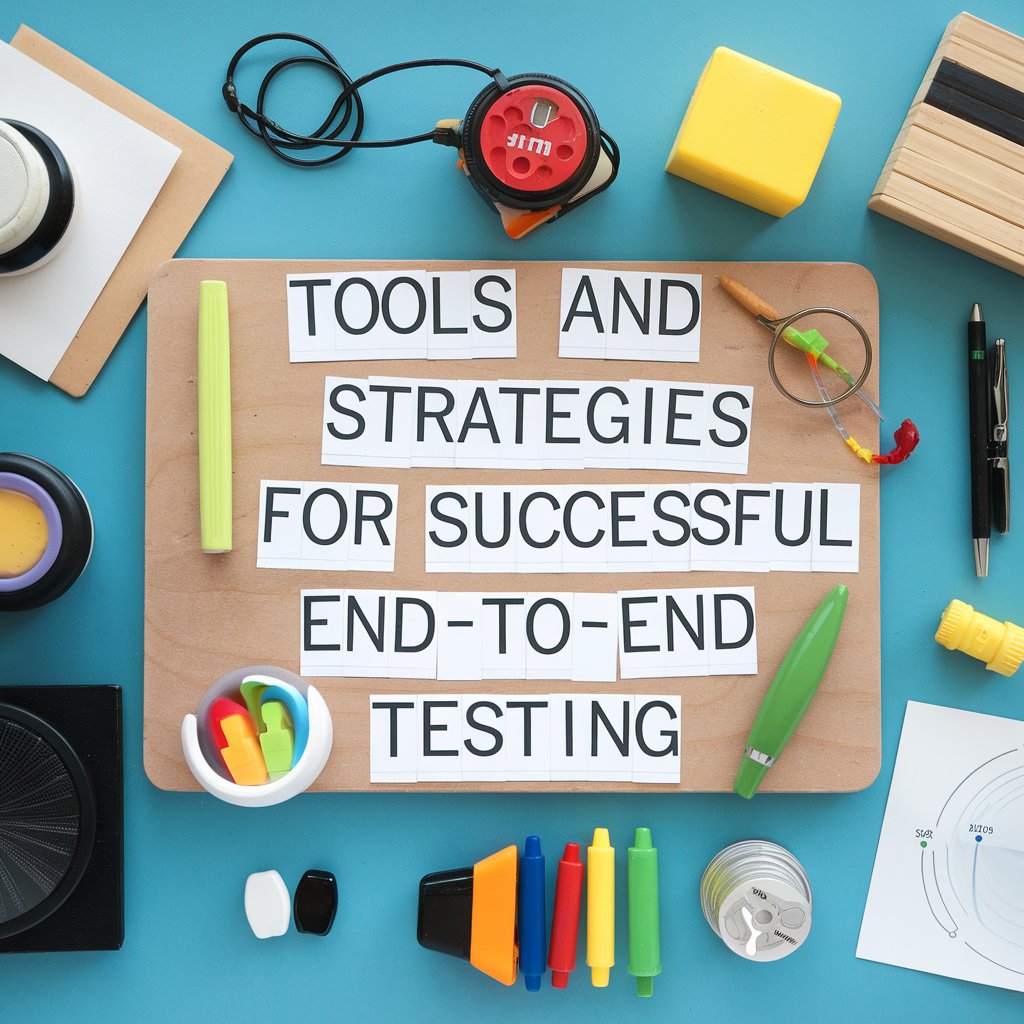End-to-end (E2E) testing is a critical component of modern software development, ensuring that applications function correctly from start to finish. It verifies the entire system’s workflow, simulating real-world scenarios users might encounter. Successful E2E testing relies on a combination of powerful tools and well-crafted strategies.
Effective E2E testing strategies involve prioritizing critical user paths, maintaining test data independence, and integrating tests into the continuous integration pipeline. By focusing on these key areas, development teams can identify and resolve issues early, leading to more robust and reliable software products.
Key Takeaways
- Automated tools enhance E2E testing efficiency and coverage.
- Prioritizing critical user paths improves testing effectiveness.
- Integrating E2E tests into CI/CD pipelines catches issues early.
Fundamentals of E2E Testing
End-to-end testing is a critical component of software quality assurance. It verifies that an application functions correctly from start to finish, simulating real-world user scenarios.
Understanding E2E Testing
The meaning of E2E (end to end) is to evaluate an application’s workflow from beginning to end. It ensures that all integrated components and external systems interact correctly, providing a comprehensive view of the software’s functionality. This testing approach focuses on replicating user behaviors and validating the system under real-world conditions.
E2E tests typically cover core functions, critical paths, and edge cases. They aim to uncover issues that might not be apparent when testing individual components in isolation. By simulating actual user interactions, E2E testing helps identify problems related to data integrity, system dependencies, and overall user experience.
Designing Effective Test Cases
Creating robust E2E test cases requires a deep understanding of business requirements and user journeys. Test designers should focus on key user scenarios and critical paths through the application. They must consider various input combinations, edge cases, and potential error conditions.
Effective E2E test cases should:
- Be clear and concise
- Cover end-to-end workflows
- Include both positive and negative scenarios
- Validate expected outcomes
- Be maintainable and scalable
Test cases should align with the testing pyramid, with a smaller number of comprehensive E2E tests complementing a larger base of unit and integration tests.
E2E Testing Methodologies
Several methodologies can be employed for E2E testing, each with its own strengths and applications. Exploratory testing allows testers to uncover unexpected issues by manually exploring the application. Scripted testing follows predefined test cases to ensure consistent coverage of critical paths.
Automated E2E testing uses tools and frameworks to execute test cases without manual intervention. This approach offers benefits such as:
- Increased test coverage
- Faster execution times
- Improved consistency and repeatability
- Earlier detection of regression issues
When implementing E2E testing, teams should consider a balanced approach that combines manual and automated testing methods. This strategy helps ensure comprehensive coverage while maximizing efficiency and effectiveness.
E2E Testing Tools and Technologies
E2E testing relies on robust tools and technologies to ensure comprehensive application validation. Modern frameworks, CI/CD integration, and specialized testing environments enable efficient and effective end-to-end testing processes.
CI/CD Integration
Integrating E2E tests into CI/CD pipelines ensures consistent application quality throughout development. Jenkins, a popular open-source automation server, supports E2E test execution as part of build processes. CircleCI offers cloud-based continuous integration with parallelization features for faster test runs.
GitLab CI/CD and GitHub Actions provide built-in testing capabilities, allowing teams to trigger E2E tests on code commits or pull requests. These integrations enable early detection of issues and facilitate rapid feedback loops.
For Agile teams, tools like Bamboo and TeamCity offer flexible workflows that accommodate frequent releases and iterative development cycles. They support custom test environments and can be configured to run specific test suites based on code changes.
Testing Environments and Simulations
Cloud-based testing platforms provide access to real devices and browsers, eliminating the need for extensive in-house device labs. These services offer scalable infrastructure for running E2E tests across multiple configurations simultaneously.
Docker containers enable the creation of isolated, reproducible test environments that closely mimic production setups.
Network simulation tools allow testers to replicate various network conditions, testing application performance under slow or unreliable connections. Hardware simulation software can emulate different CPU and memory constraints, ensuring applications perform well across diverse device specifications.
Conclusion
E2E testing is crucial for ensuring software quality and reliability. Selecting the right tools and implementing effective strategies are key to successful E2E testing efforts. Combining these tools with best practices such as thorough test planning, comprehensive test coverage, and regular maintenance of test suites can significantly improve the efficiency and effectiveness of E2E testing processes.






